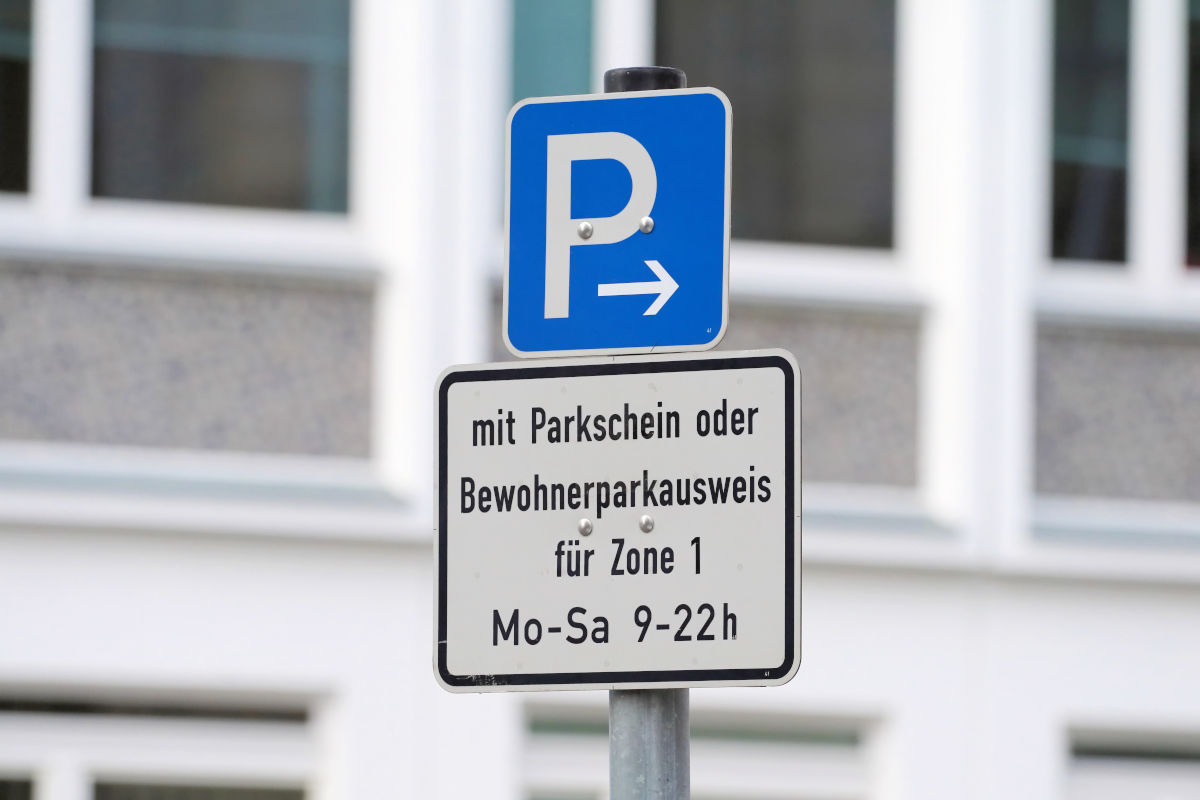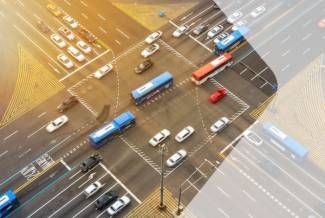Municipal Mobility Management
Liveable and healthy cities and communities, reduced environmental pollution and efficient mobility for all road users – municipal mobility management is needed to reconcile all these desires for the future. Because only holistic planning and coordination at municipal level can pave the way for the mobility of the future.
But what exactly does municipal mobility management involve, how is it implemented and what challenges does it face? In this article, we will answer these and other questions for you.
Transport concepts for livable communities and cities
Nomen est omen: Municipal mobility management is the planning and organization of measures for better mobility by a local administrative unit. It is therefore an approach developed by cities and municipalities to make mobility in their areas more efficient, sustainable and user-friendly.
The main goal of municipal mobility management is optimized, sustainable mobility. It aims to optimize the transport infrastructure in order to
- improve the quality of life of citizens
- reduce traffic
- and minimize environmental impact.
Mobility management is not only an issue at municipal level: find out more about corporate mobility management here.
Why mobility management is needed at municipal level
Fewer emissions, less traffic and an improved quality of life - achieving these goals is a complex task that requires extensive planning.
On the one hand, the successful introduction of new mobility solutions is based on the interaction of a wide range of players within local government. From traffic planning and building law to marketing and public relations, many parties are involved in the planning and implementation process.
But a sociological component must also be considered: Because for the measures to bear fruit, they must of course be used by the population. This requires targeted communication in order to raise people's awareness of the new solutions.
Accordingly, municipal mobility management is needed for the implementation of sustainable mobility solutions. Only efficient communication and action concepts can guarantee smooth cooperation between all stakeholders.

The planning basis: the mobility concept
The basis of municipal mobility management is usually a mobility concept. This is a central planning instrument that contains the entire strategy and all measures planned to achieve the objectives.
What needs to be considered here?
- Due to its complexity, the development of a mobility concept alone can take two years or longer.
- The plans must always be individually tailored to the respective region – blanket solutions are therefore not an option here.
- The scope of the necessary measures varies based on the size and population of the respective location.
- It combines solutions from different areas to create an effective overall strategy.
A well-developed concept for municipal mobility management enables effective cooperation between urban planners, transport experts and other relevant stakeholders.
Good to know: There are many informative resources for planning mobility concepts and measures. For example, the German Platform for Mobility Management (DEPOMM) association offers a step-by-step guide for the introduction and implementation of municipal mobility management on its website.
Municipal mobility management measures
Of course, a mobility concept must be tailored to the needs of the respective city or municipality. Which measures are desirable and suitable therefore depends entirely on the individual requirements of the respective region and its inhabitants. Below you will find examples of some of the most common municipal mobility management measures:

- Expansion of local public transport:
By expanding bus and rail connections and improving the punctuality and reliability of existing services, the use of private vehicles can be reduced.
- Promoting cycling:
Measures such as the creation of safe cycle paths and bicycle parking spaces as well as the introduction of bicycle rental systems promote the use of bicycles as an alternative, sustainable means of transportation.
- Car sharing:
The use of private cars is to be reduced by promoting car sharing services and carpooling.

- Awareness campaigns:
Awareness campaigns aimed directly at citizens help to promote environmentally friendly modes of transportation and change behavior.
- Parking management:
Targeted parking management measures, such as special parking zones for residents or certain user groups or the regulation of loading and stopping bans, can help to reduce traffic congestion.
- and much more.
These are just a few examples of the many ways in which municipal mobility management can improve mobility in cities and municipalities. The range of other measures is very broad and goes far beyond the examples presented here. All of these options are already a step in the right direction. But municipal mobility management has even greater potential for the future.
Municipal mobility management enables future mobility concepts
The goals of municipal mobility management lie in the future-oriented change in the way road users move around. It is therefore an important step towards the mobility of the future and can help to establish more sustainable and efficient mobility concepts of the future.
Municipal mobility management can, for example, help to realize the following future concepts:
Multimodal mobility
By expanding the public transport network and offering a wide range of alternative means of transportation, multimodal mobility can be promoted - this combination of different environmentally friendly means of transport can make journeys more efficient, convenient and environmentally friendly.
Connected traffic systems
Advanced solutions such as intelligent traffic systems can optimize traffic flow with the help of new technologies and data analysis. This in turn can reduce the burden on the environment and improve the quality of life for all road users.
Environmentally friendly mobility
By providing alternative, sustainable means of transportation and the necessary infrastructure for their efficient use, municipal mobility management can pave the way towards environmentally friendly mobility.
Future-oriented municipal mobility management: an example
With the ALIKE project, the city of Hamburg is planning an important step towards new mobility: by 2030, 80% of all journeys in the city are to be made in a climate-friendly manner.
This is to be made possible by autonomous electric minibuses, among other things. As part of the project funded by the Federal Ministry for Digital and Transport, these will change the city's mobility as a new means of public transport. In addition to the purchase of the vehicles, the project also provides for comprehensive information services for the population.
Concrete Solutions by SWARCO
Challenges for municipal mobility management
Establishing new mobility solutions and thereby coming a step closer to the mobility of the future - in order to achieve this goal, municipal mobility management must overcome a number of hurdles. Depending on the project, the following challenges can be expected, among others:
Funding
Like any other project, municipal mobility management requires sufficient financial resources. Unfortunately, obtaining these funds is often a challenge.
Changes to the infrastructure
In order to change the way road users get around, additions and changes to the local infrastructure are usually required. Whether and how these can be realized is one of the challenges of municipal mobility management.
The complexity of multimodality
In order to make multimodality a reality, many hurdles have to be overcome. This is because the corresponding coordination of different modes of transport requires complex planning.
Acceptance by road users
The participation of road users is important for new services to be used. Target group-specific measures are necessary in order to sustainably change existing patterns of thought and action among the population.
Urban densification
The constant growth of cities must be factored into future mobility solutions.
Technological progress
The integration of future-oriented technologies such as electromobility, autonomous driving or intelligent intersectionsnaturally requires corresponding technological progress. Some of these complex, forward-looking technologies are still in the early stages of development.
Political support
Successful municipal mobility management also requires political support. Only then can the necessary changes be implemented.
Comprehensive planning and cooperation at various levels are crucial for overcoming such challenges – and for achieving the goals of municipal mobility management.
Conclusion: Sustainable paths into the future through municipal mobility management
In order to bring about a sustainable change in our mobility, measures at municipal level are a necessity. Municipal mobility management is therefore indispensable. Only through holistic planning and cooperation between different stakeholders can long-term solutions be created and important steps taken towards the mobility of the future.
Last but not least: Municipal administrations are close to the real needs of local people – this is what makes municipal mobility management so important. After all, the aim is not only to make transportation more efficient and environmentally friendly - the focus is also on the quality of life of road users in the region.
FAQ
Municipal mobility management refers to the planning, coordination and implementation of measures to promote sustainable transportation and aims to improve mobility in a specific area. The aim is to protect the environment, reduce traffic congestion and offer better transportation options for everyone.
Mobility managers play a key role in the promotion of sustainable mobility. They are responsible for coordinating activities and services to promote sustainable mobility in cities, municipalities and companies. Their aim is to bring about the mobility of the future.
A mobility concept should contain all important information about the planned measures. This includes aspects such as traffic planning, traffic flow improvement, alternative means of transportation and modern technologies for traffic control. Citizen participation and communication of the measures should also be important components of the concept.

STAY INFORMED
GET OUR NEWSLETTER!
Subscribe to our ITS / Smart Mobility Newsletter and receive regular updates on trends, developments, solutions and events.
Bilder: © Kara – stock.adobe.com; © contrastwerkstatt – stock.adobe.com; © philipk76 – stock.adobe.com





